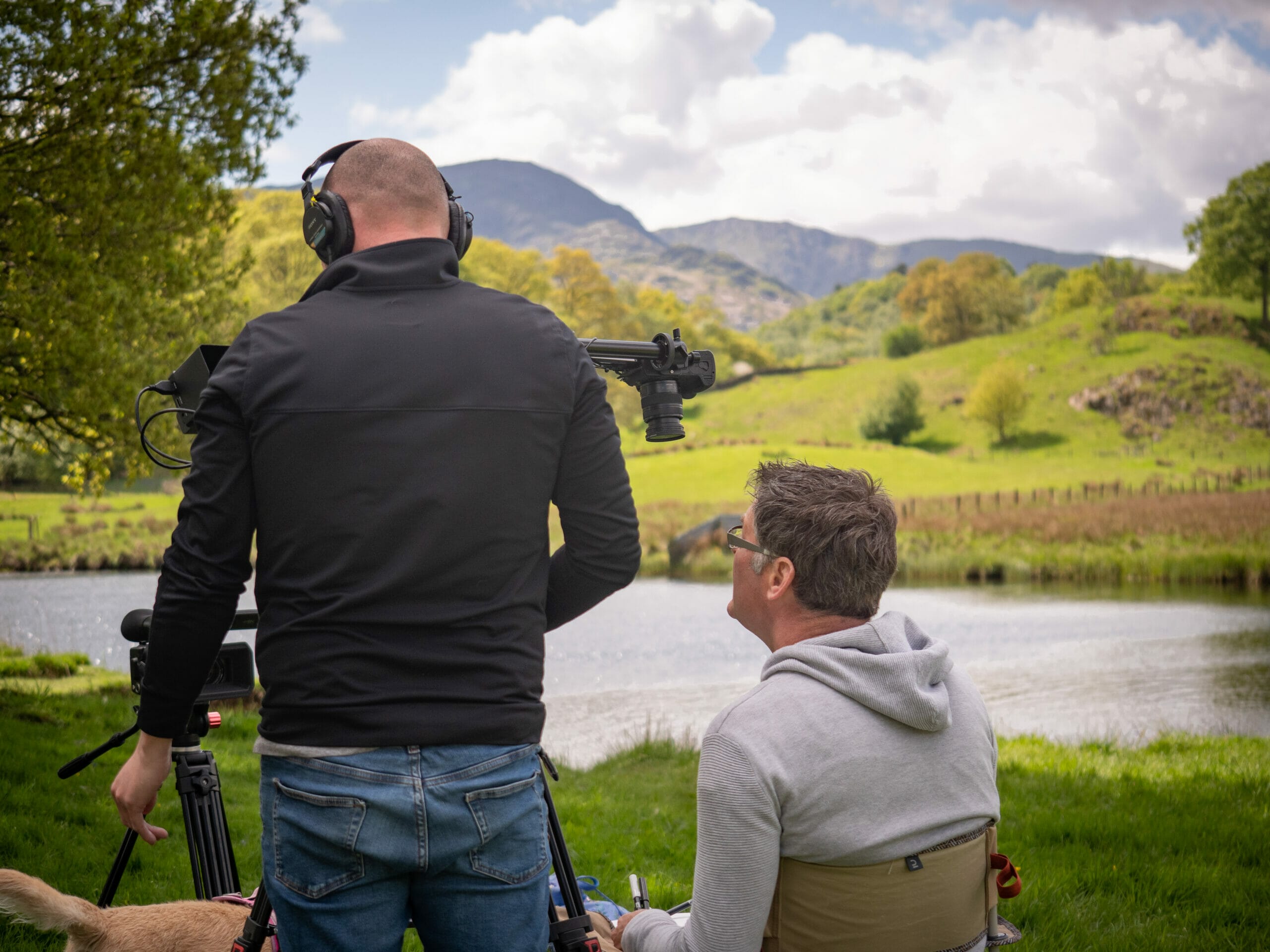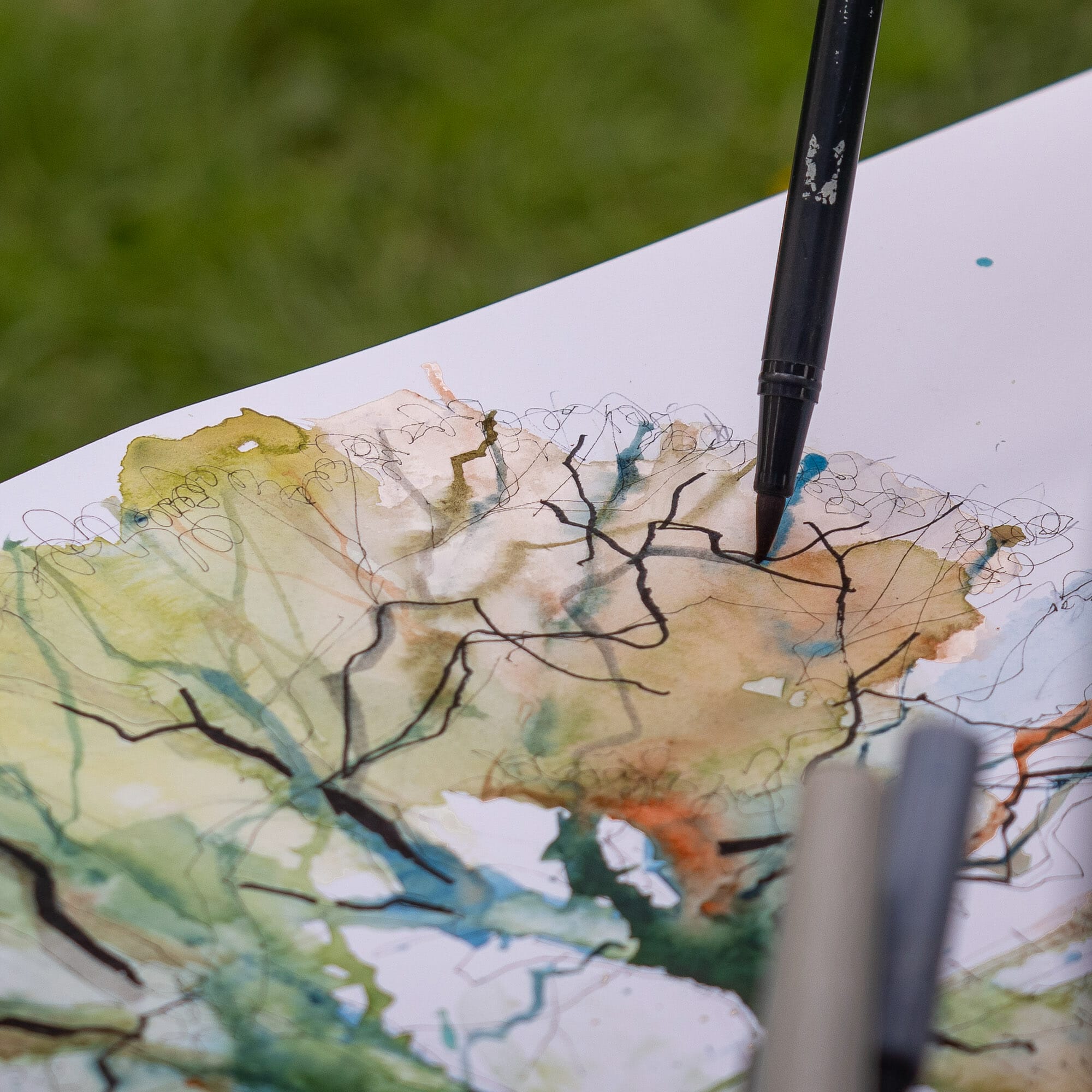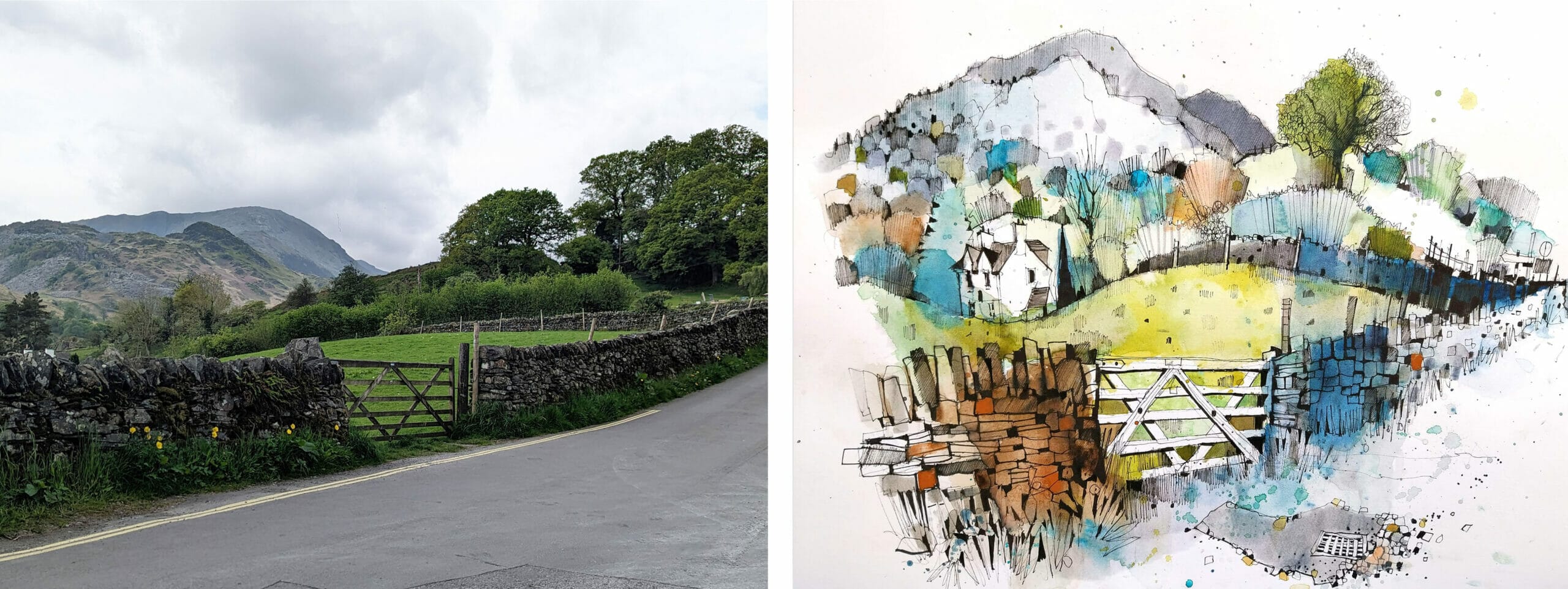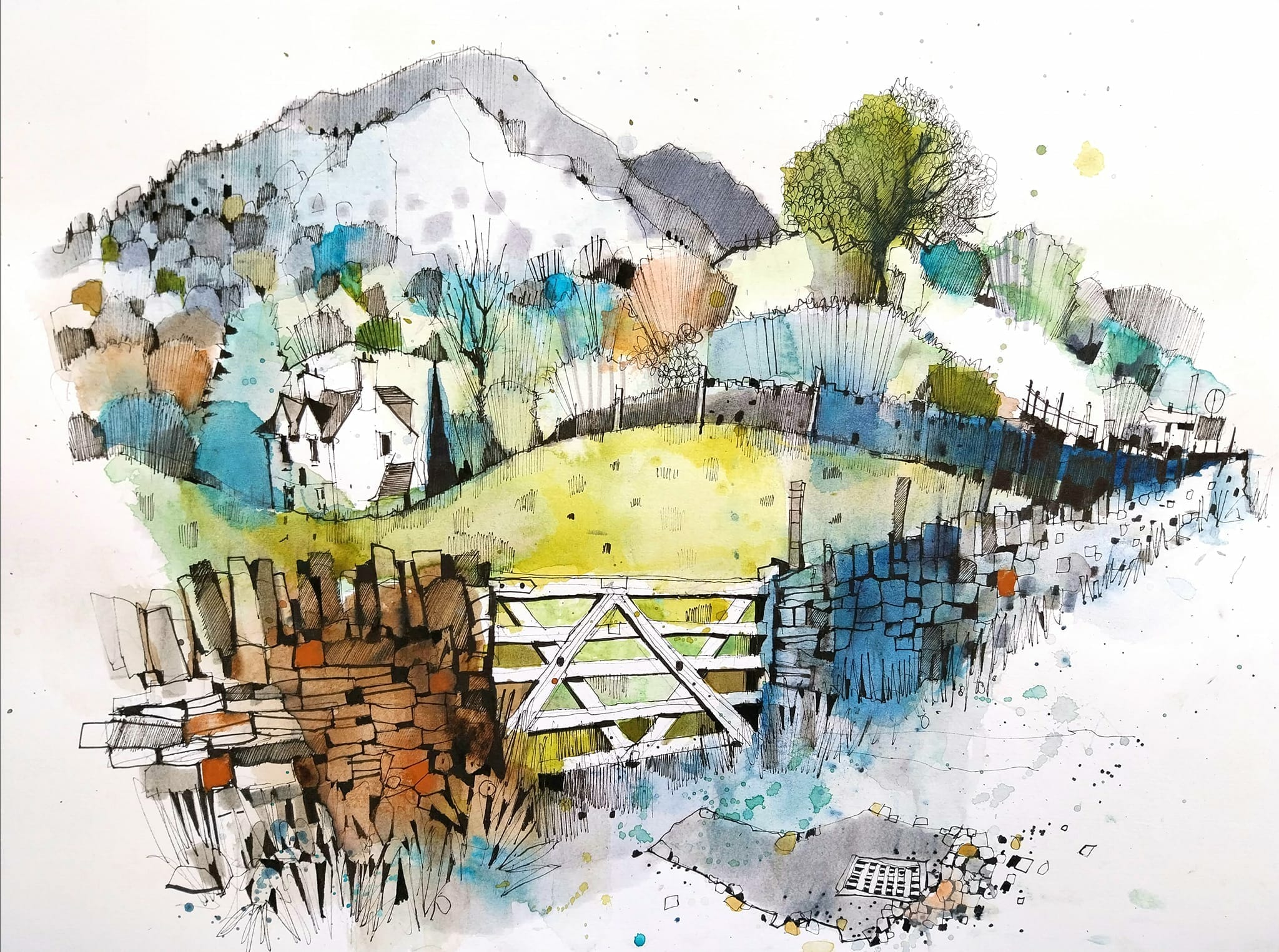LANDSCAPE PAINTING TIPS
5 things to know
Landscape sketching can be a wonderful and relaxing way to connect with nature and improve your artistic skills.
The act of sketching in nature can be as rewarding as the final result. Whether you’re a beginner or an experienced artist, in this blog we will share some tips that we picked up whilst filming our landscape sketching course with Ian Fennelly so that you too, can become a landscape artist.
Choose the Right Location
Nature offers an endless array of inspiring landscapes: from rolling hills to serene lakeshores, lush forests to arid deserts. Choose a place that resonates with you, where you can immerse yourself in the beauty of the surroundings. walk around a little until you find a scene that truly catches your eye.


The key is to find a place that captivates you, has a good space of sense and depth and doesn’t look too flat. Try looking for a scene that is ‘easy to read’ and isn’t too big of a space. When searching for locations in Rural Sketch Course, there were a few scenes that Ian didn’t pick for various reasons.
“When I really looked at the scene it didn’t have enough going on. The hills are flat, they’ve haven’t got enough visual interest and there’s no elevation. The middle ground is very ambigious and is just a mass of greenery. It’s all the same shape, colour, tonal value and texture.”
– Ian Fennelly

Pre-Sketch from Rural Sketch Course
Choose a focal point
When starting your landscape drawing, select a single subject in your composition (ideally something in the foreground) to focus on.
There can be several points of interest in a drawing but usually only one focal point. Don’t get bogged down with intricate details too early in the process.
Ian normally creates a ‘pre-sketch’ first to explore his composition and to decide on focus points.
It can be a tree, a plant, a wall, gate, bird — anything about the scene that strikes your fancy. This will give the rest of your drawing something to relate to, and it’ll ensure the scale of the landscape is correct. Trust me, this simple starting technique changes everything.
Observe and Study
Spend some time observing the scene before you start sketching. Take note of the lighting, shadows, textures, and colors. Pay attention to how these elements change over time as the light shifts and the day progresses.
You might also want to consider what time of day you would like to sketch in as the lighting will be so different throughout the day.
Quick Natural Details
Nature scenes can be fairly busy with lots of leaves, grass, and smaller details. It would be impossible to capture every single one realistically so try experimenting with abstract methods for creating trees, leaves, branches and grass.
Remember to vary up your detail sizes and to show a good variation of size, pattern and texture.

Layer by Layer
Think of your scene as a layered photo. Your background is just as important as your foreground. You want to make sure that you’re capturing all of the glorious mountains, and hills but still drawing attention to the plants and grass at the front of your scene.

“Landscapes are about trying to create that space with layers. Layers that you can draw, layers that you can add tone too and layers where you can add texture. All of the workshops in Rural Sketch Course will help you to capture layers in different ways and will explore the elements of foreground, middleground and background.”
– Ian Fennelly
Your goal should be to capture the essence and beauty of the landscape as you see and interpret it. Landscape sketching is a beautiful way to connect with nature and unleash your creativity. Whether you’re seeking tranquillity, artistic growth, or a deeper connection with the outdoors, sketching landscapes offers a fulfilling and rewarding experience.
So, grab your sketching kit, head out into nature, and start capturing the breathtaking beauty of the world around you—one sketch at a time.
Ready to learn more?
Rural Sketch Course
In this remarkable new online course, you’ll embark on an uplifting learning journey with Ian Fennelly. Together you’ll explore the spectacular views of the British Lake District as Ian shares his finest secrets for crafting stunning landscape sketches.

